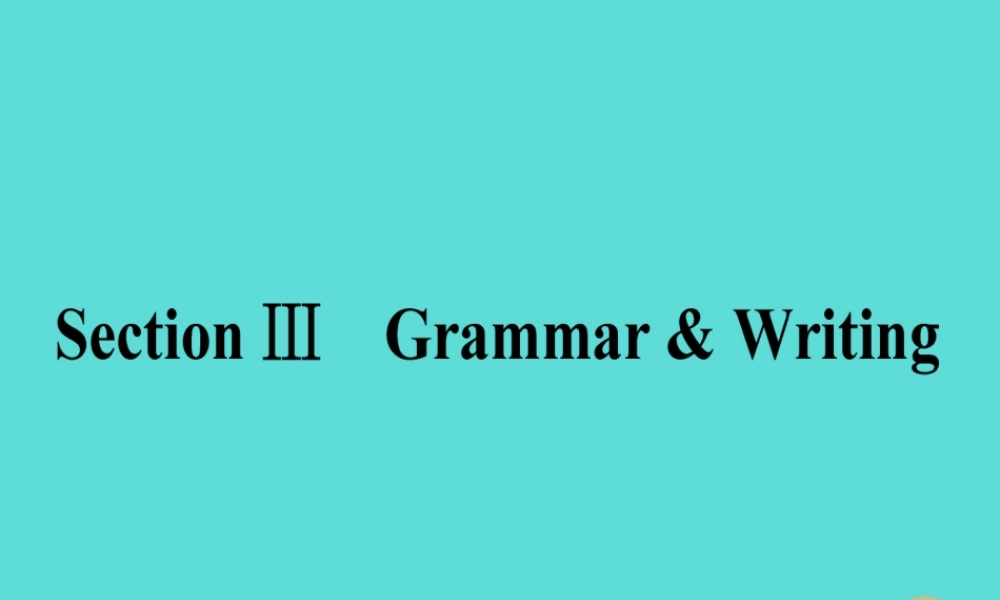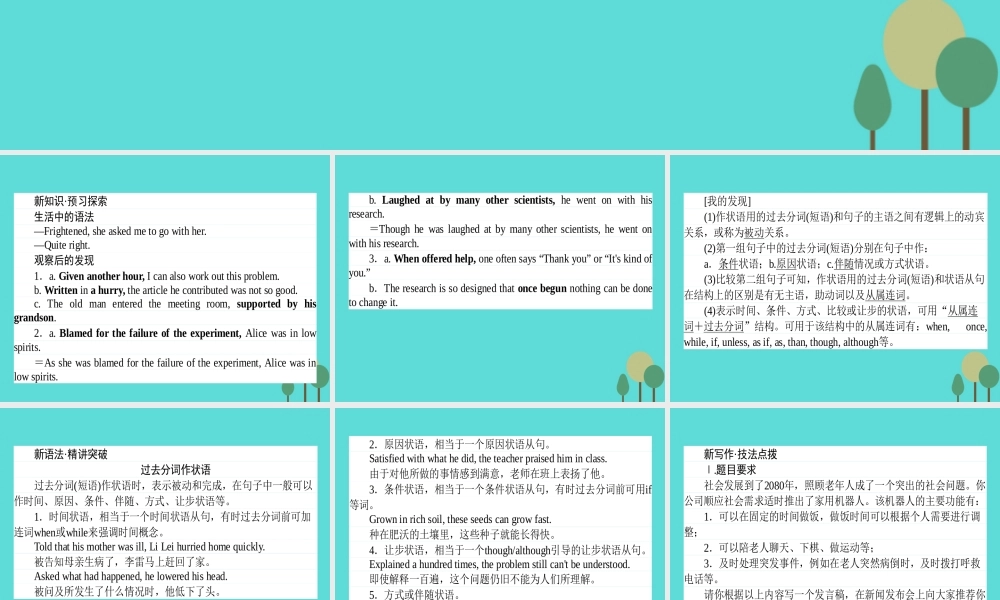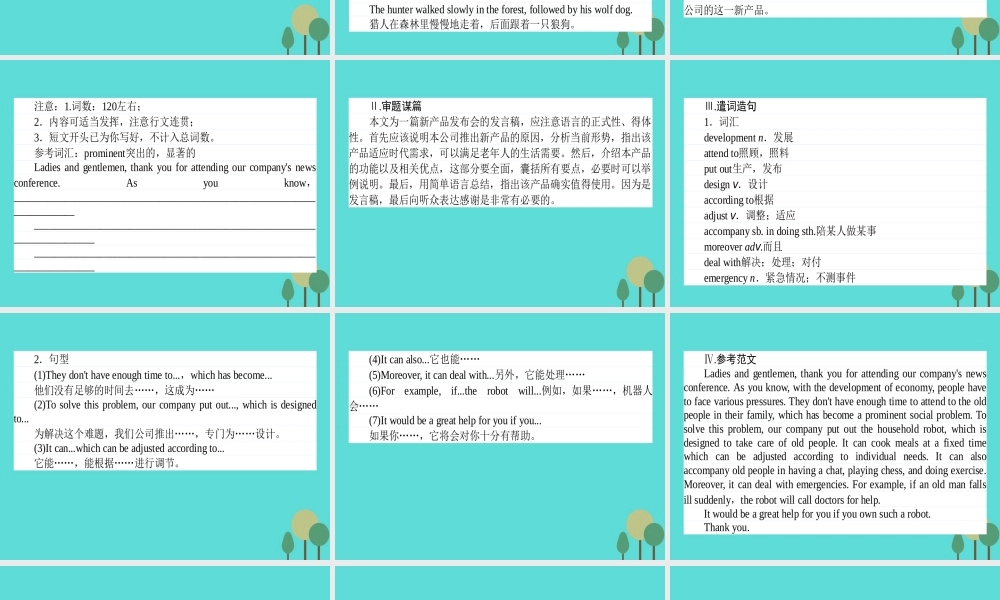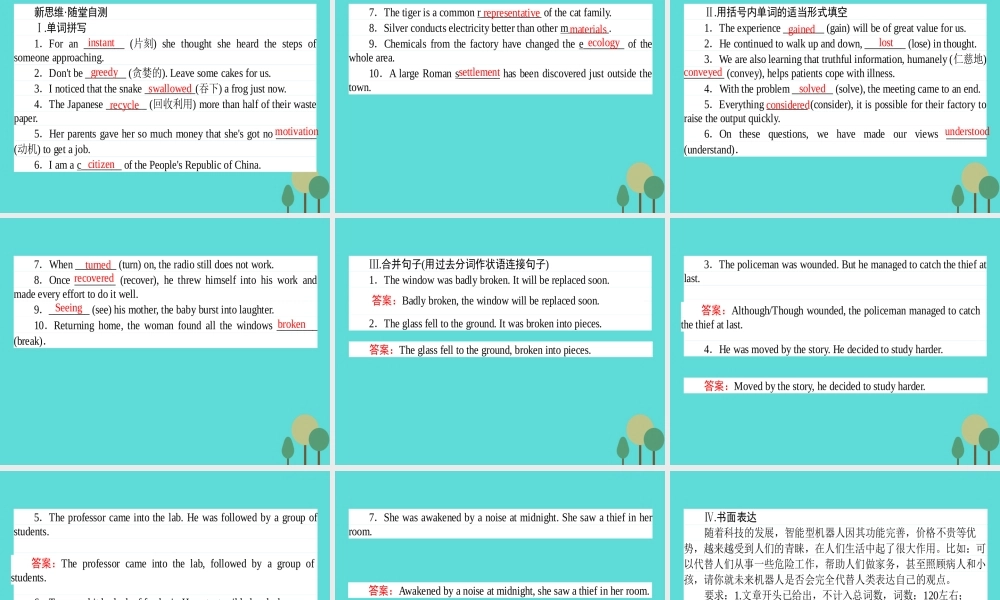新知识·预习探索 生活中的语法 —Frightened, she asked me to go with her. —Quite right. 观察后的发现 1.a. Given another hour, I can also work out this problem. b. Written in a hurry, the article he contributed was not so good. c. The old man entered the meeting room, supported by his grandson. 2.a. Blamed for the failure of the experiment, Alice was in low spirits. =As she was blamed for the failure of the experiment, Alice was in low spirits. b. Laughed at by many other scientists, he went on with his research. =Though he was laughed at by many other scientists, he went on with his research. 3.a. When offered help, one often says “Thank you” or “It's kind of you.” b.The research is so designed that once begun nothing can be done to change it. [我的发现] (1)作状语用的过去分词(短语)和句子的主语之间有逻辑上的动宾关系,或称为被动关系。 (2)第一组句子中的过去分词(短语)分别在句子中作: a.条件状语;b.原因状语;c.伴随情况或方式状语。 (3)比较第二组句子可知,作状语用的过去分词(短语)和状语从句在结构上的区别是有无主语,助动词以及从属连词。 (4)表示时间、条件、方式、比较或让步的状语,可用“从属连词+过去分词”结构。可用于该结构中的从属连词有:when, once, while, if, unless, as if, as, than, though, although等。 新语法·精讲突破 过去分词作状语 过去分词(短语)作状语时,表示被动和完成,在句子中一般可以作时间、原因、条件、伴随、方式、让步状语等。 1.时间状语,相当于一个时间状语从句,有时过去分词前可加连词when或while来强调时间概念。 Told that his mother was ill, Li Lei hurried home quickly. 被告知母亲生病了,李雷马上赶回了家。 Asked what had happened, he lowered his head. 被问及所发生了什么情况时,他低下了头。 2.原因状语,相当于一个原因状语从句。 Satisfied with what he did, the teacher praised him in class. 由于对他所做的事情感到满意,老师在班上表扬了他。 3.条件状语,相当于一个条件状语...




